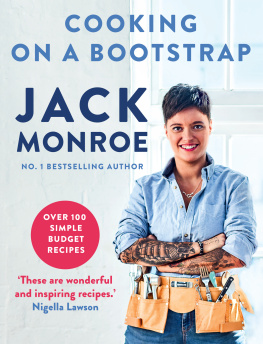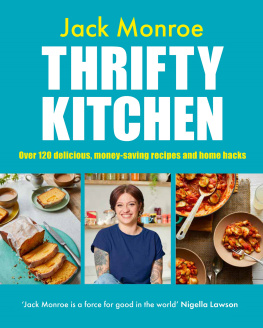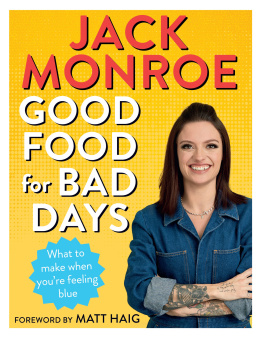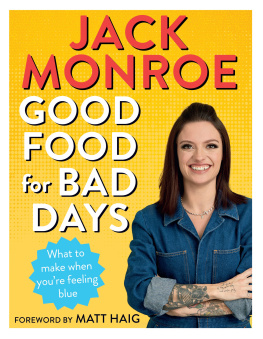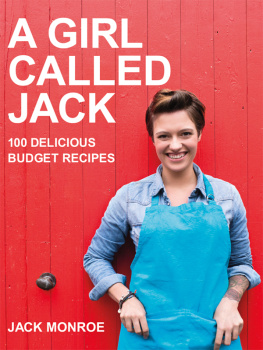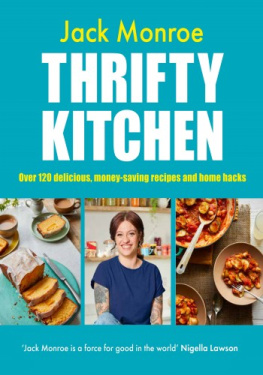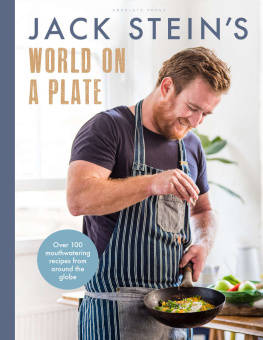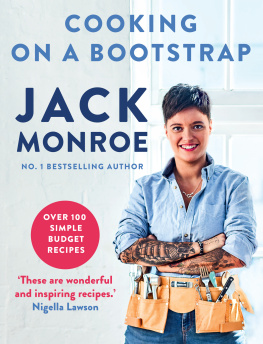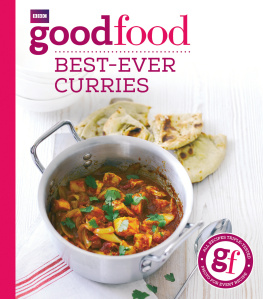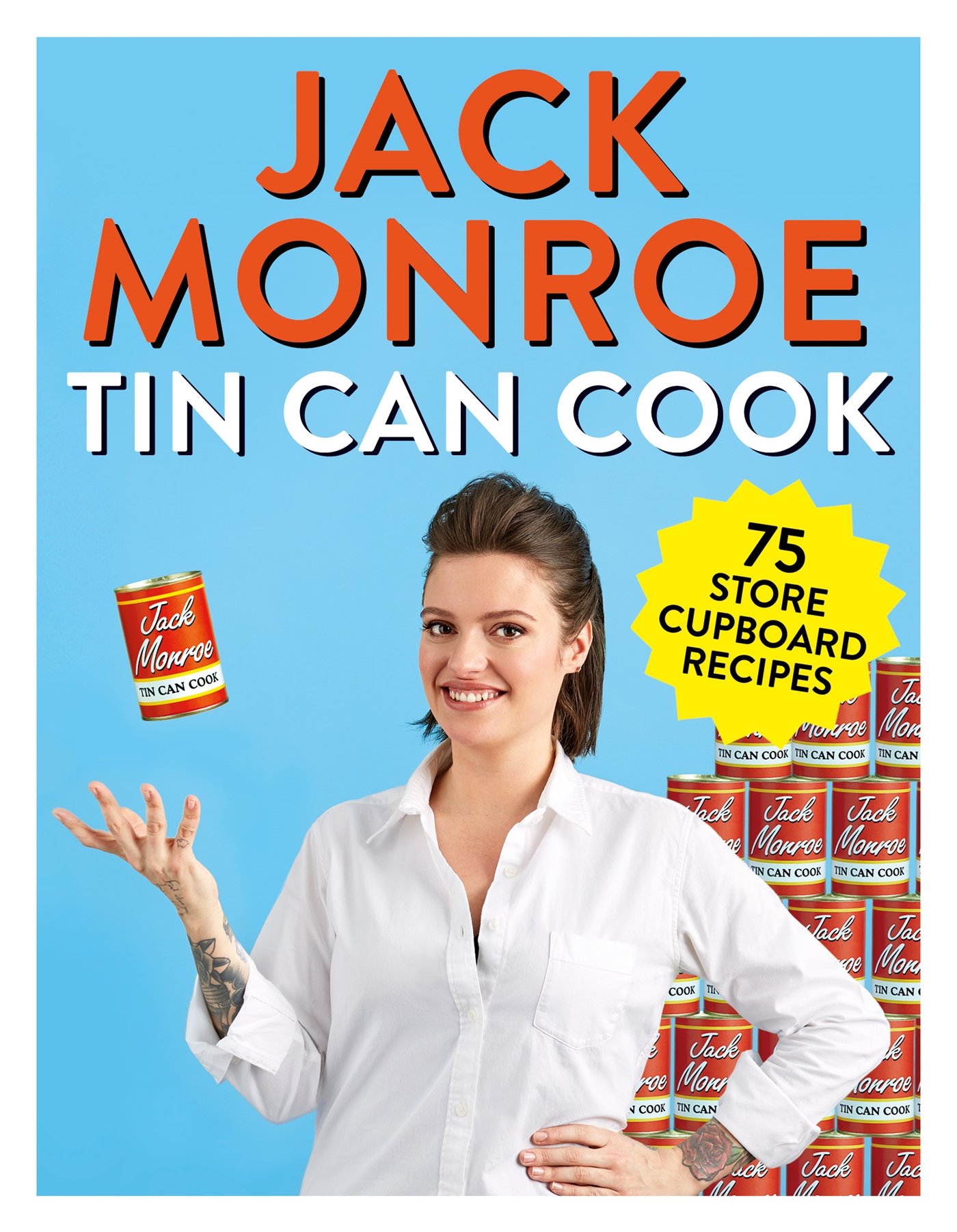CONTENTS
Guide
WELCOME TO TIN CAN COOK
This is my fourth cookbook, and Ive seen inside enough kitchen cupboards by now to be fascinated by our relationship with tinned foods, and what those tins can say about us. Our abilities, our fears, our emergencies, our comfort zones. Tins with ring pulls attached tend to belong to those with slightly more disposable income; look carefully at the Basics and Value ranges next time youre in the supermarket and youll see that they require a tin opener to get into them. The irony, that those with the least money need an additional piece of kitchen equipment in order to eat the most basic food stuffs.
Foodbanks once a quaint Dickensian idea of a big society, now sit squarely in every community in the United Kingdom. At the time of writing this, there are around four hundred, providing 1.5 million food parcels a year to people who would be at risk of starving without them, and those parcels are made up primarily of tins. I know, because I was a foodbank user for six long months. It was out of those parcels that I started to write my early recipes online, mostly for something to do, and then as my blog grew in popularity, out of a sense of duty and necessity.
I have gone on to write cold box recipes, for people who are homeless or have no access to kitchens. Kettle recipes for people who you guessed it have only a kettle to heat their food. And recipes from tin cans for charity dinners, for foodbank users, for a pop-up restaurant to raise awareness of an Eat Or Heat campaign, and for my books.
The late, former BBC cook Shirley Goode once wrote about my first book, A Girl Called Jack, that cooking with yoghurt and a jar of fish paste doesnt take any particular skill. In my Guardian recipe column, readers would tut below the lines in the comments section every time I chopped a tin of potatoes into a saag aloo or casserole, so I responded by including an entire chapter of the blessed bleached things in Cooking on a Bootstrap by way of retort. I have spent years rinsing the sticky orange sauce from 23p baked beans to reveal the runty little haricots beneath, at a third of the price of the plain ones a great alternative if you can handle the slightly luminescent tinge that doesnt quite come off.
We have an odd culinary relationship with tinned food. In higher society, rare and supposedly exquisite goods like tinned baby octopus, foie gras and caviar come in beautifully crafted, artistically designed tins. They are collectors items; one former friend kept a display of every tin of caviar she had ever eaten, an understated trophy cabinet of excess and moral turpitude. The restaurant Tincan, designed by the Tate, popped up briefly in Soho, in London, with hundreds of tins of expensive fish lining the walls to be selected by the customer and served with a chunk of bread, a pinch of salt and an eye-watering bill.
At the other end of the spectrum, I fill my shopping trolley with identical white labelled tins, the contents scrawled on the front as though in a childs hand, with no ring pull on the top, and barely a clue to their contents. At 20p, carrots in a tin are cheaper than fresh. Tinned tomatoes contain more lycopene, a cancer-fighting agent, than their fresh counterparts. Tinned potatoes can be up to a sixth of the price of even the cheapest fresh varieties. Sweetcorn, mushy peas, beans and lentils are all basic staples that can be thrown together into a variety of surprising meals. Tinned sardines contain almost an entire days recommended intake of vitamins D and B12. The Tin Can Cook is one who can open their cupboard and create a meal from its contents on any given day, whatever they may be.
As I said, its an odd relationship that we have with tinned goods. But we all have them, lurking in our kitchens, and Im here to show you how you can create beautiful, delicious and nourishing meals by simply chucking a few of them together.
These recipes are designed for everyone from those with very little cooking confidence and ability, the smallest of kitchens and the scantest of equipment, all the way up the culinary spectrum to the gourmands, the bon vivants, the entertainers, the practical jokers among us. I once cooked a three-course meal for a group of diners at a five-star hotel entirely from the cheapest tins in the supermarket. They loved the food, but their reactions when we did the big reveal and showed them that it all came from a pile of tin cans, was absolutely priceless. Most laughed, some were embarrassed, one man was memorably apoplectic. Oh, I laughed at his furious notion that somehow tinned potatoes were going to kill him, when moments before he had declared it the best meal he had ever eaten. You can, of course, recreate these recipes with fresh ingredients if you like, but wheres the fun in that? Grab your tin opener, and an open mind, and come with me.
SHOPPING NOTES
For the purposes of simplicity, and in order to make this cookbook accessible to people with a range of abilities, I have chosen to use the simpler option, where available, for each ingredient. More experienced cooks may find it slightly frustrating to have to reverse-engineer the recipe lists if choosing to use, say, garlic bulbs in place of garlic paste, but few food writers cater to newcomers, and so I must try. If you are a more confident cook, youll know how much liquid stock comes from a cube (around 450ml), how many onions 100g of frozen onion represents (a small one) and how to make your own pease pudding (why bother?).
As a novice cook I found myself put off by overtly flouncy language and unfamiliar terminology, and my readers tell me the same. So, I hope you take these recipes in the spirit that they are intended; as a beginners guide to cooking with tinned and pre-prepared ingredients, rather than anything that will ever compete for Michelin stars or similar.
For the new cook, as your confidence grows in the kitchen, I hope you will stray from these recipes, add your own twists to them, venture into fresh ingredients if you want to, even make your own garlic pastes, pestos and similar. Learning to cook is like most of us learning to walk; the first few attempts will be clumsy, futile, perhaps even a little painful and frustrating but if you keep getting up and having a crack at it, one day youll barely even remember not being able to do it. You just need to take the first step.
CANSPLAINING:
CAN TINNED FOOD BE GOOD FOR ME?
I knew as soon as I pitched the idea for this book that I would be deluged by critics keen to share their perceived wisdom about how canned food isnt good for you. Ive had this throughout my career as a food writer from comments on my Guardian recipes, to emails, to a handwritten letter on fancy notepaper instructing me that I was a dangerous woman for using tinned potatoes. Here is my retort to the cansplainers, once and for all; an A to Z of tinned goods, and how good they really are. Ive tried not to go too heavy on the science, and I hope it makes for interesting reading.


